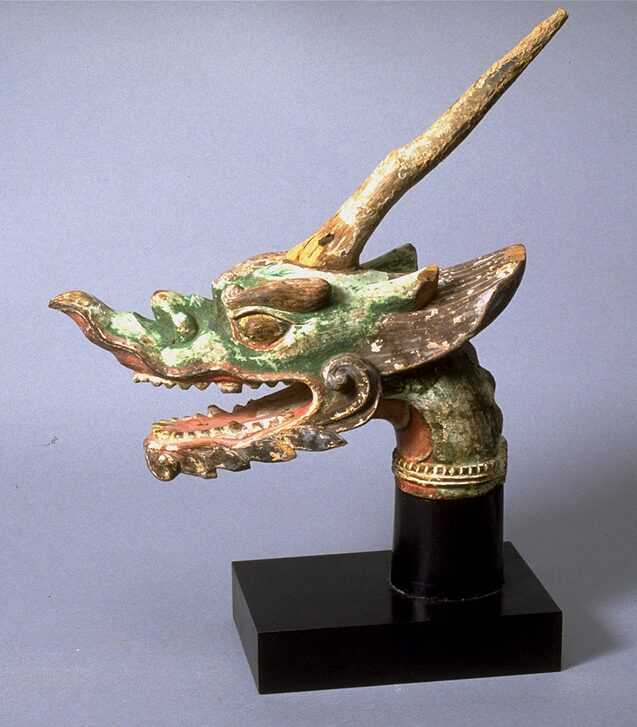Dragon head (finial for a staff or a piece of ceremonial furniture)
Japanese

Description
Dragon’s head sculpture
Japan
Kamakura period (1185–1333)
13th–early 14th century
Polychrome on wood
Museum purchase made possible
by the Margaret Watson Parker Art
Collection Fund, 1969/2.20
Dragons have a long history in Japan with deep
connections to Buddhism. The many words for
dragon that are borrowed from Chinese and
Sanskrit suggest the amount of dragon mythology
brought to Japan by Buddhist monks in the form
of ancient Hindu and Chinese legends.
This dragon’s head reflects the increased interest
in visually dramatic forms that characterized
Kamakura period Buddhist sculpture. The
rippling snout and mouth suggest a sense of
movement, which would have been further
enhanced by the reflections of the gold paint
originally used for the teeth and eyes. The bright
colors and dynamic carving convey a sense of
the power of dragons in premodern spiritual
traditions.Within Japanese Buddhism, dragons
were associated with water and were called upon
in rain rituals. This sculpture was likely mounted
on a staff or a piece of furniture in a Buddhist
structure.
Usage Rights:
If you are interested in using an image for a publication, please visit https://umma.umich.edu/request-image/ for more information and to fill out the online Image Rights and Reproductions Request Form.